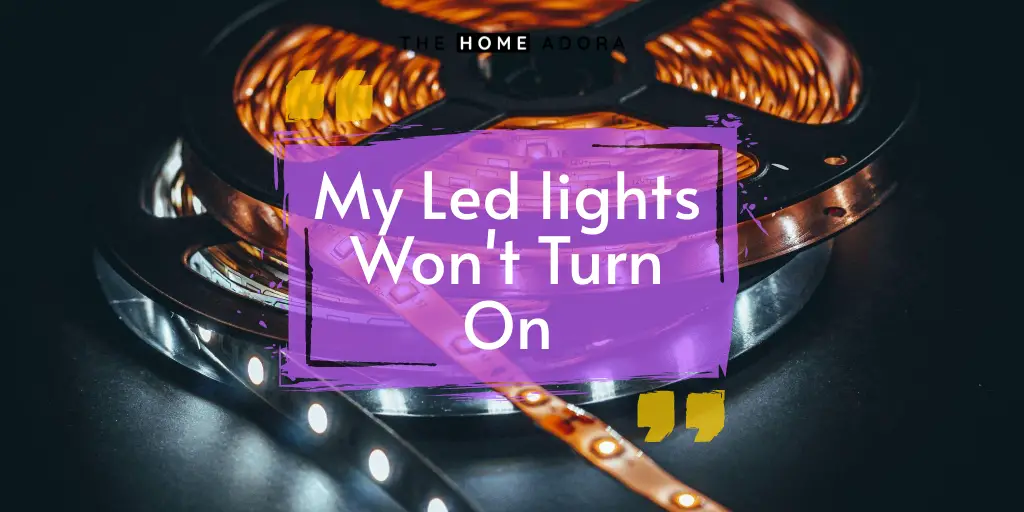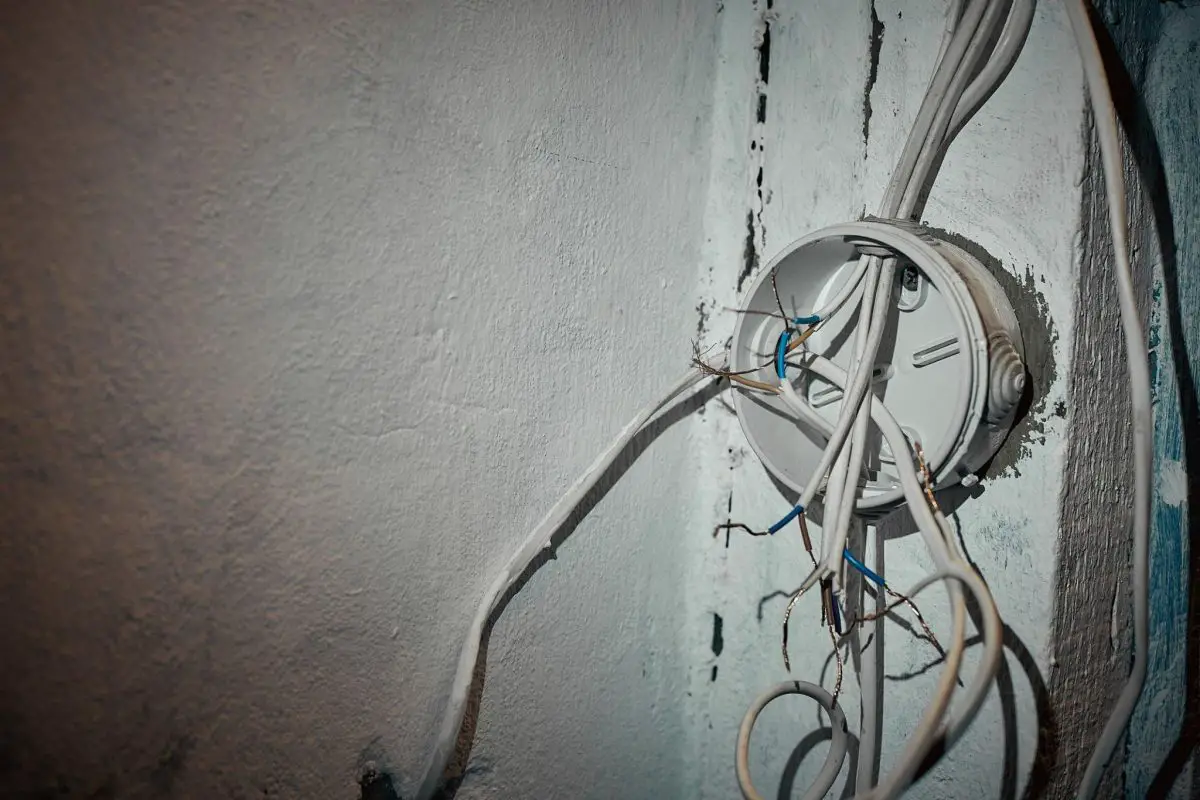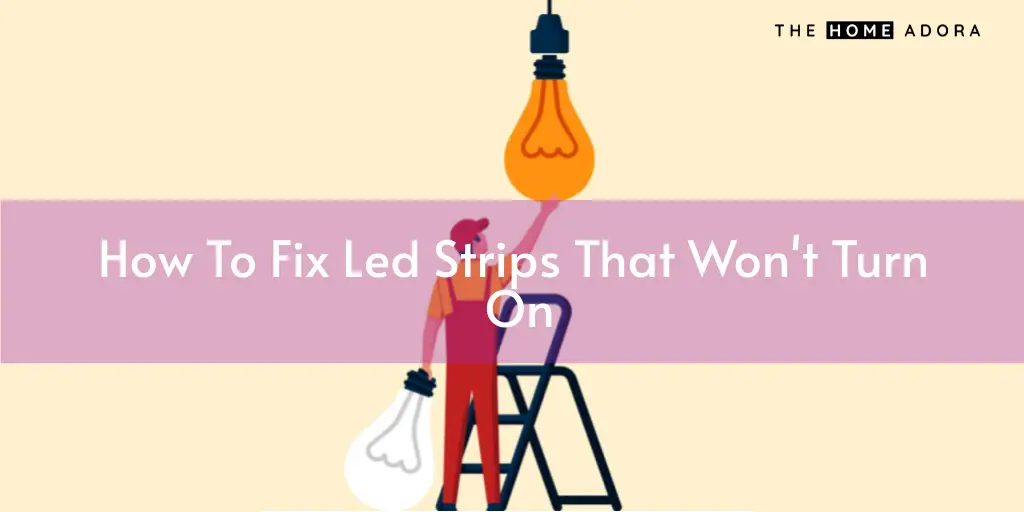When you’ve been using LED lights for a while, you’ve probably encountered a variety of issues that require troubleshooting. Sometimes you can’t turn the light on.

The causes for this may vary greatly, depending on the power source and the bulb itself. A faulty power supply, faulty pin connection, loose connections, a faulty circuit design, or even damage caused by rain are common causes.
Just because you have a problem with your LED light (even when it can’t just turn on) doesn’t mean you have to buy an entirely new strip. So, in today’s guide, we’ll look at some of the most common problems that LED strip light owners face, as well as some of the most efficient and affordable solutions to them. But first, let’s take a look at a few of the most likely reasons for LED strips light failure.
My Led Lights Wont Turn On – What Makes LED Lights Fail?
When an LED light is nearing the end of its life, it does not simply turn off; instead, the amount of light it emits gradually decreases and it is no longer as efficient as it once was. However, this is not to say that LED strip lights never completely fail; it can happen, but it is uncommon.
Here are some of the reasons why LED lights fail or won’t turn on:
1. Faulty Pin Connections
Your LED lights will not turn on if they have a faulty pin connection. This is easily remedied by simply replacing the pin connection with a new one. To determine if this is the cause of the problem, disconnect the pin and examine it; sometimes these will be bent or not fully connected, but even if they are not, it is always a good idea to check and rule out this possibility.
2. Loose Connections

Whereas if the wire connection between the bulb and the circuit is loose, you may notice flashing lights. Because of electromagnetic interference, the current would be periodically obstructed. The solution is to inspect all of the circuit’s connection points to see if there are any wires that are about to break or disconnect.
3. Temperature Changes
One reason an LED light may fail before its rated lifespan is due to the temperature of the environment it is placed in. If the temperature around it becomes too high and it lacks a proper heat sink, the LED strip lights will overheat and fail. This can happen if you use an LED light not intended to be used in a confined fixture, such as a recessed can or downlight.
Furthermore, while LEDs are generally rated to operate at relatively low temperatures, going lower than recommended can be detrimental to LED performance. Always read the specifications or contact the manufacturer to ensure that an LED light can be used in an enclosed fixture and that the maximum and minimum operating temperatures are appropriate for your project.
4. Power Supply Error
Providing power to an LED light or a group of LEDs is not the same as providing power to most electronics. Unlike most electronic devices, LEDs require a constant current source rather than a constant voltage source.
LED lights may not turn on or maybe fuse if the proper or incorrect power source is not used. Check that you’re using the proper power source for your LED lights, as each type of LED bulb requires a different voltage to function properly.
5. Issues with Structure
Any flaws in the framework of the LED light connection, whether the LEDs themselves or the way they are connected, can cause an LED light to fail. For example, if the LEDs are not of the highest quality, you may be at risk. As a result, in this case, you often get what you pay for; more expensive LED lights have higher grades that provide better light quality and efficacy.
In general, the better the materials used in your LED light, the less likely you will have problems with the process required for the LEDs to illuminate. For example, structural flaws in an LED could cause the electrical flow to flow both ways through the LED instead of just the one-way required for the p-n junction between the semiconductor materials.
6. Efficiency Droop
Efficiency droop is a phenomenon (caused by the Auger Effect) in which LED efficiency drops significantly when a high current is passed through the light.
To put it clearly, When the LED light is turned on and the electrical current flowing through the LEDs increases, the luminous efficacy of the LEDs drops by up to 20%. So, the more electricity you use to power your LED light, the greater the impact on efficiency droop. To combat this, an industry standard of 350mA operation has been established. If your fixture is required to operate above that standard, your LED strip lights may not last as long.
How To Fix Led Strips That Won’t Turn On
The easiest way to troubleshoot and fix an LED light strip is to work your way from the power source or wall outlet all the way to the end of the light strip.

This helps to diagnose potential issues as you examine the power source, controller, or on/off switch, the connections, and finally, the light strip itself.
There are a few things to do if your LED lights are not turning on, they include:
Examine the power or electrical supply to your lights.
Make certain that the power supply is not overloaded.
Examine the on/off switch or controller that controls the lighting.
Replace the batteries in any battery-operated lights or remotes.
Examine each connection for loose or inaccurate (+) or (-) polarity.
Search for crimped or flexing light strip sections.
Common LED Lighting Issues (& How To Fix Them)
The colors of the LEDs are wrong.
One of the advantages of LED lighting is the ability to select from a variety of colors. If the LED colors are incorrect, it could indicate that something is not properly plugged in. In most cases, you’ll just need to make sure your R, G, and B wires are connected correctly. Furthermore, make certain that the positive end of the connector is aligned with the positive end of the strip. If you’re certain that the wires are in the correct positions but the colors are still off, reset the LED light strips according to the instructions in the manual or below in the FAQ Section. This frequently resolves any inner problems that are causing color issues.
Dimmer Issues
The guarantee of energy savings and longer bulb life has enticed many homeowners to switch to LED lighting. HOWEVER, some LED lights may not function properly with certain types of dimmer switches, actually resulting in dimmable LED flashing and flickering.
One of the most inconvenient aspects of LED lights is when they suddenly begin to flicker or dim. This can happen for a variety of reasons, and determining the cause can be challenging. However, the majority of the time, it is caused by a faulty connection or a voltage drop!
Color Rendering of Poor Quality
While Led bulbs have several advantages over conventional light sources, color rendering quality can occasionally be poor. As an outcome, the colors of LED-illuminated objects may appear inaccurate. There are, however, methods for improving the color rendering performance of LED lighting.
Users could really solve this issue by buying a product with a high CRI. The Color Rendering Index, or CRI, is a metric that measures how effectively a light source renders colors. A greater CRI indicates better color rendition. It is preferable to use LED lights with a CRI of 80 or higher.
LED Lights That Flicker
Many people are aware of fluorescent light flickering, but did you realize that LED lights can also flicker, which may be irritating and even cause headaches in some people? While it may appear to be a nuisance, there are some scientific explanations for this phenomenon.
To start, it is critical to recognize that LEDs emit light in a different manner than other light sources. Instead of an electrical current, they use semiconductor chips to generate light as electrons pass through them. This is known as electroluminescence.
Let’s return to the flickering. Because the electrical charge passing thru the semiconductor chips isn’t always smooth and constant, LED lights may flicker. The LEDs may flicker if there are any fluctuations in the current.
A quarter of the LED strip lights are not functioning properly.
This is a common problem with old LED strip lights. The vast majority of the time, it is due to overheated metal on particular parts of your LED strip. This means that a portion of your LED strip will keep functioning normally, while the “fatigued” sections will not light up at all. Because this is a problem with the strip’s components, you may need to contact the manufacturer for replacement parts. Most of the time, however, you will simply have to replace the whole strip.
How To Fix LED Strip Light That won’t Turn On (Video)
Frequently Asked Questions (FAQs)
How Do You Reset LED Lights?
It’s actually quite easy! To begin, ensure that your LED light is plugged into an electrical outlet. Then, for at least 10 seconds, press and hold the button on top of the power cord.
After this time, release the button and wait about one minute for it to turn off automatically before unplugging it from the outlet. This will return your LED lights to their factory settings, and they should be ready to use again!
Conclusion
You can see that LED light strips and LED lights can fail for a variety of reasons. External causes, such as an inconsistent source of power or dimmer, may be present in some cases. In other instances, it could be a problem with the way your strip is connected. This may impair the ability of power to reach your LED light strip or change the colors emitted by the light. In rare cases, an internal problem may necessitate the substitute of your full LED light strip.
LED light strips, on the other hand, are designed to be long-lasting and reliable, especially if purchased from a reputable manufacturer. This means that the majority of problems can be fixed through do-it-yourself troubleshooting. I hope you found this LED strip light troubleshooting guide informative and useful!
